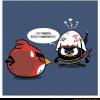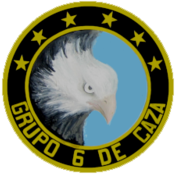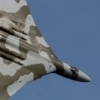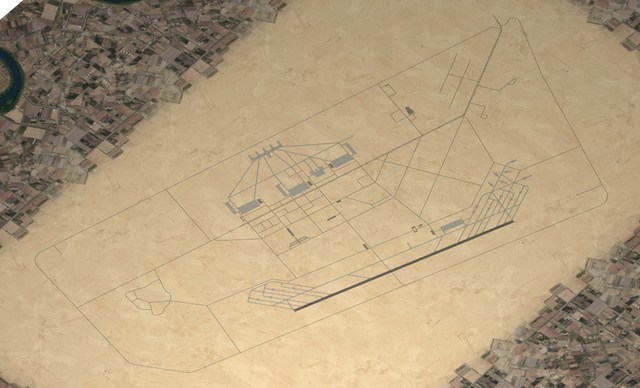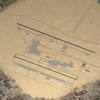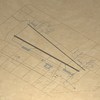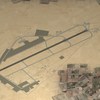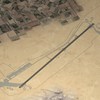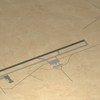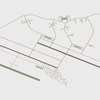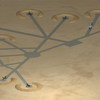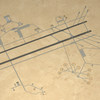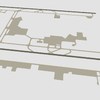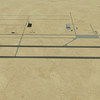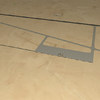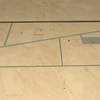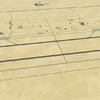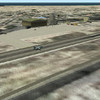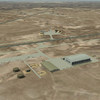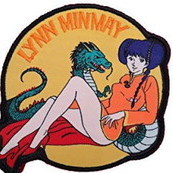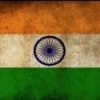Leaderboard
Popular Content
Showing most liked content on 12/31/2022 in all areas
-
7 pointsChinese Expeditionary Force over Dhimar... At the same time... Patrol over the Taiwan Strait
-
7 pointsA variety of custom objects and texture upgrades for Gep's outstanding Battle of Britain terrain - subdued dreary look with custom cargo ships, barrage balloons, dock cranes, bridges, port warehouses, etc.
-
6 points
-
5 points
Version 1.3.0
443 downloads
Rio de la Plata terrain version 1.3 ***************************************************** ++++++++++++++++++++++++++++++++++++++++++ This terrain is written for SF2NA and SF2E or SF2I. +++++++++++++++++++++++++++++++++++++++++ I. Short description: This terrain covers the Bay of the river Rio de la Plata. South of this bay we find Argentina, north of it Urugay and Brazil. East of it is the Atlantic Ocean. The timeframe of the terrain is from 1980 to 2020. It is made as a NavalMap with carrier vs carrier operations in mind. The scenario is, that in 1982, the Royal Navy answered the argentinian invasion on the Falkland islands with sending a Naval Task Force toward Buenos Aires and landing troops on the shores of Argentina. Thatswhy you find a big british beachhead on the map. You can fly following missions for the British and their allies, the Brazilians: SWEEP,CAP,ESCORT,INTERCEPT,STRIKE,SEAD,ANTI_SHIP,RECON,CAS,Armed_Recon For the Argentinians you can fly this missions: SWEEP,CAP,ESCORT,INTERCEPT,STRIKE,SEAD,ANTI_SHIP,CAS,RECON New in vesion 1.2: - number of target area increased from 37 to 47 - all target areas are now fitted with objects. Factories, warehouses, commbuilding etc. - Airbase Tandil moved 75 km westward. It is not yet at the correct position. I fear, that if the base is placed at the correct position, the AI would not use it, because it is to far in the west. - At the former position of Tandil Airbase i placed a temporary aifield. - I added the river Rio Paradana and the neigbour rivers. - I relocated Montevideo and the Montevideo Airport. The airport is completly new made. - I reworked all rivermouth tiles, enlarged them to 1024x1024 pixel size. New in version 1.3 - number of targetareas increades to 82 - a lot of new factory target areas for Argentina - included uruguayan airbases - included static Cessna for airfield "population - included some goodies ++++++++++++++++++++++++++++++++++++++++++++++++ II. INSTALLATION: To run this terrain you need SF2NorthAtlantic and SF2 Israel or SF2 Europe. Unzip all files into your saved game folder ...ThirdWire\StrikeFighters2XXXX Thats it. If you have SF2Europe installed you must do nothing more. If you miss SF2E and have SF2Israel you must open file Rio_de_la_Plata_Bay.ini with Notepad editor and look for the lines: //CatFile=..\IsraelME\IsraelME.cat CatFile=..\GermanyCE\GermanyCE.cat change the entry into: CatFile=..\IsraelME\IsraelME.cat //CatFile=..\GermanyCE\GermanyCE.cat save the file ~~~~~~~~~~~~~~~~~~~~~~~~~~~~~~~~~~~~~~ II.A: Goodies I have made a new mainscreen and included a new mainscreensound. Check it out and if you like it then copy the folder Menu to your SF2 mod installation If you own the TK's DLC28 and SF2Israel, you can use the MirageIIIEA and MirageIIIEBR, which you also find in the goodies folder. Simply copy to your objects folder. ++++++++++++++++++++++++++++++++++++++++++++++++++ III. Credits. Tileset is basing on Starys Green Hell 3.0 tileset. I converted it to jpg format and merged the 512x512 tiles to 1024x1024 pixel tiles. Tileset green made by Wilches GK-CG1 civil airport building made by GKABS GK-CMT civil airport building made by GKABS GK-CT1 civil airport building made by GKABS Base_C.lod round parking area taken from AirfieldDevKit_v1.1, made by Pureblue Base_H.lod small parking area taken from AirfieldDevKit_v1.1, made by Pureblue ControlTower.LOD made by RussoUK Modern Royal Navy ship pack made by WhiteBoySamurai i added shipnumbers and converted the bmp to jpg files, corrected the hitboxes ARA 25 de Mayo made by Torno for original 25 de Mayo CV, - upgrades by paulopanz i made the angle deck and the Flak working and converted the bmp to jpg files TAM made by SUICIDAL & Torno, taken from SF2 Tanks Pack i converted the bmp to jpg files TAM_Roland made by Gabilon, i made a new skin Unimog made by BANIDOS TEAM and SUICIDAL i converted the bmp to jpg files GearingFRAM1B_ Argentina stock ship of SF2NA, made by TK, modded by me SumnerFRAM2_Argentina stock ship of SF2NA, made by TK, modded by me Fearless Class Austin, stock ship of SF2NA, made by TK, modded by me Cleveland class made by YEYEYE (General Belgrano), modded by me Leopard1A5_Brazil LOD file made by Gabilon, skin made by me Gepard_Brazil LOD file made by Gabilon, skin made by me Factory buildings Made by Geezer Refinery1,2 and Factory-2 Made by Wingwiner, i renamed the files Techniker made by Geezer, moded by me Mainscreensound mady by Andrius Klimka A special Thank you goes to Wilches and Snowburn for their support. I hope i have not forgotten someone. . ++++++++++++++++++++++++++++++++++++++++++++++++ IV. This Terrain is Freeware. Commercial use is not allowed. And i say it again for the YAP, YankeeAirPirates file thiefs, the usage of this terrain and/or parts of the terrain for commercial use is not allowed!!!!! +++++++++++++++++++++++++++++++++++++++++++++++++ V. For remarks, comments, bugs, etc please use CombatAce forum or send me a PM. Hope you enjoy it. Michael (Gepard) Made in Germany 27. April 2023 -
4 pointsConvair 201. Blueprints stolen by east german intellegency service HVA in 1978. Built from 1986 in factory Flugzeugwerft Dresden as FWD-85 "Sperber" (Sparrow Hawk). First seen over the Baltic Sea in 1987, flown by pilots of the Jagdfliegergeschwader 3, Peenemünde.
-
4 pointsI have uploaded the Rio de la Plata terrain. Here the Planningmap: Its intended as NAVAL Map with carrier vs carrier action. Thatswhy i have included the ships for the british and the argentinian carrier battle group. I also used the stock Austin landing ships to simulate the british Fearless Class, so you can face two british ship groups in a mission. Ground action you find east of the argentinian Air Base Tandil. Here you can fly CAS missions to support argentinian or british tanks. Between Tandil and Buenos Aires the area of Armed_Recon is located. Armed Recon is possible only for the British or Brazilians. Montevideo is set as neutral airport. Have fun and Happy New Year!
-
3 points
-
3 pointsjust a couple more. almost done with this one already. kinda easy when you only have 24 airframes to cover, and acutally remove alot of weapons capability.......
-
3 points
-
3 points
-
3 points
-
2 pointsBenchmark Sims Falcon BMS 4.37 has now been released. Downloads https://www.falcon-bms.com/downloads/
-
2 points
-
2 points
-
2 points
-
2 points
-
2 points
-
1 point
-
1 point
-
1 point
-
1 pointYes they have to do as part of the licensing agreement with Tommo who own the IP currently.
-
1 point
-
1 point
-
1 point
-
1 point
-
1 point
-
1 pointnother cool scene while looking at something completely different.... Castle Birds in Dhimar
-
1 pointthe main project. 93rd BW birds were added when they kept popping up during research
-
1 point
-
1 pointJournal of FSLt Douglas Bell-Gordon, RNAS Part 8 Saturday 25 November 1916. Vert Galant aerodrome. A wonderful end to the week! I suppose I should pick up where I left off. After two days of rain, I flew with PO Donaldson on Tuesday, 21 November, to spot for the guns north and east of Albert. PO Donaldson had assured me that he had been fully trained for this task, but I found it took him a long while to find the targets even though I flew close to them at little more than 4000 feet. Further, he struggled with his Morse work. All of this is to say that the Hun Archie merchants had a wonderful time scattering great volumes of Herr Krupp’s finest iron across the sky for thirty or forty minutes. We returned very gratefully to Vert Galant Farm, where the mechanics patched numerous holes in our machine, and I had a few stern words with my gunlayer. The rain returned with heavy overcast the following day but did not stay long. On Thursday, PO Donaldson and I were packed off to the lines south of Arras to take photographs of a new enemy reserve trench system. Any hope that the good PO would be better with the camera that he was with a Morse key were soon dashed. Archie threw us all about the sky while we paraded up and down our assigned sector and he messed about with the camera and plates. To my intense shock, we managed to produce some acceptable work. For the past week, we have played host to a work party from the Royal Engineers who are erecting a number of buildings for our use, including several of the new “Nissen” huts. These are odd-looking buildings, shaped like half-barrels cut lengthwise. The two end walls are made of wood, each with two windows (which flank a door at one end). They will be heated after a fashion by an iron stove in the middle of the long enclosed room. The roofs of these buildings are corrugated iron. Most delightfully, a large wood and canvas building with a metal roof is being constructed for our wardroom. After the next few days, we shall be able to eat all together for the first time. Today, Saturday, is a red-letter day. We had a new batch of machines arrive about a week and a half ago. They are more of the new Sopwith scouts. Our mechanics have been working on them since their arrival, fitting them with some missing instrumentation and with their Vickers guns. Yesterday, when the weather cleared in the afternoon, we flew our Strutters up to Dunkirk and endured the long drive back. We also bade farewell to a number of ratings who had served as gunlayers. This morning I was able for the first time this morning to try my hand at the new machine. How do I describe this wonderful toy? It bears a familial resemblance to the Strutter, but it is more petite and likely more lethal. The engine is an 80 horsepower Le Rhône. It is less powerful than the engine of the Strutter, which had the 110 horsepower Clerget, but the Scout is significantly smaller and lighter and is far nimbler and quicker. The experience of sitting as the sole proprietor of a single-seat machine tingled my nerves, whether in fear or happy expectation I did not know. The starting procedure was much the same as the Strutter’s. The balance of throttle and mixture required to keep the engine running smoothly would challenge a circus high wire artist. When I finally waved away the chocks and bounded out onto the field, the little Scout felt like a racehorse anxious for the gate to part. I turned into the wind and eased the throttle and mixture levers to the points I had mentally noted during the brief minute I had spent waiting for the engine to warm. Within a few yards the tail came up and I was cautious with the joystick, as there was little room to spare between the tips of the propeller and the ground hurtling beneath. Then we were aloft, climbing quickly into a frigid blue sky dotted with puffy cloud. I did not turn for a minute or two, not wishing to test my luck with a new machine until I had a couple of thousand feet beneath me. Then I gave it some gentle left rudder and bank. The little machine fairly snapped about into a turn. Its ailerons were linked together so that it rolled willingly, quite unlike its big brother, the two-seater. The rate of climb surprised. I tried a roll to the right and it turned even more quickly. If I merely thought about climbing, it climbed. If I thought about diving, it dived. I found myself laughing hysterically and then an evil plan formed in my brain. In front of me lay the Vickers gun, connected to the engine by a Sopwith-Kauper synchronising device. It would not be on to test the gun over Doullens, so eastward I climbed. By the time I passed north of Albert, the Sopwith was climbing through 10,000 feet. Its broad wing chords let it perform well even at altitude. Over the British lines I turned north. A few bursts of muddy brown-black Archie puffed out nearby, tossed over from Hunland by some ambitious enemy gunners. The Sopwith reached 11,000 feet. I thinned the mixture yet again and studied the instrument display. All was well. The sky about seemed empty of aircraft, enemy or friendly. Now it was time to do something I had never done before. With the throttle wide open, I put the machine into a shallow dive and then, with the speed indicator up to 120 knots, I pulled the stick back gently. The nose rose up to the vertical. I kept the stick back and felt the safety belt cutting into my thighs. I was very conscious that the belt was the only thing preventing me from becoming a bird man. Then the horizon appeared and tilted downward to the nose of the machine. I dropped the mixture until it was too lean for the engine to run. Now the Sopwith dived out of its loop and levelled off, still heading north. I adjusted the mix again and the engine came to life. My first loop, and surprisingly easy to pull off. I collected speed and did it twice more. It would take some practice, I discovered, as I lost about a thousand feet of altitude while looping. Now for the plan. I turned eastward and, with the aircraft pointing into Hunland, fired the Vickers. Just as with the Strutter, it gave off a painfully slow pop-pop-pop. I imagine the rounds splattering amongst distant Huns. The gun was slow but it would do. Utterly pleased with myself, I turned home and once over friendly terrain I cut the engine. I volplaned all the way to Doullens. Now down to less than 2000 feet, I pointed the machine in the general direction of Vert Galant and home. It was a simple matter to sideslip the last 500 feet of altitude away, skim over the treetops and the farm buildings, flatten out, and let the Sopwith settle onto the field. With a bit more practice, I was sure that my new little toy could be landed on a tennis court.
-
1 pointJournal of FSLt Douglas Bell-Gordon, RNAS Part 7 "We had a bit of adventure on the second patrol when we chased another Hun two-seater." Tuesday, 14 November 1916. Vert Galant aerodrome. Raining. Hayden and I took off mid-morning on Sunday, 29 October. The Wing padre was coming for service at eleven and I’d been looking forward to it. My family were ridiculously strict Calvinists back home and I had always dreaded being dragged to the kirk to be threatened with hellfire every weekend. But our Wing padre was the village vicar C of E type of God merchant and his occasional efforts to save us from perdition were lovely affairs – great and lusty hymn singing, brief and funny sermons, and a nod from the good man to light up our pipes and cigarettes as we saw fit. I’d begun to wonder if I was being called to the cloth after the war! But war being war, here were the two of us heading north for the lines and armed with a bloody great camera to take the Kaiser’s photograph instead of singing Hymns Ancient and Modern. We were all alone in the chill sky and I wasn’t fancying the job. According to the latest intelligence, there were at least three squadrons of Albatros scouts around Verdun. We climbed to 3000 feet and turned north over Toul. A few minutes later the engine began to miss on one cylinder and a bit later a second cylinder went wobbly. Manfully suppressing a grin, I turned for home. We were too late for the service, but I had time to share a drink with the padre in our anteroom and catch up on the good bits I’d missed. We had the day off on Monday and went into Toul to do a bit of shopping and have lunch. By the time we were picked up for our return it was raining, and the rain continued into the next day. Back at Ochey I was informed that Wing Captain Elder was about and looking for me. I found him in the main administration office. He bade me take a seat. “We have received orders from the Fleet to dispatch a good Strutter pilot to Dunkirk. I have selected you because they specified experience on a two-seat machine. It seems you are to be drafted to a new squadron.” And with that it was over. Farewell to 3 Wing. Farewell to Ochey. Farewell to all my friends in our warm and well-decorated hut. Farewell to the “Canadian Club” and the promise of raids over Germany. I was back to living under the eye of every senior naval officer in France, or so it seemed. I was fortunate enough to be able to fly to Dunkirk in the gunlayer’s seat of a superannuated Breguet that was being sent to the knacker’s yard. We landed at Saint-Pol-sur-Mer, just outside of Dunkirk. There I was handed an envelope with orders. There wasn’t even time to get into Dunkirk itself, not that I was really looking forward to that experience. The orders were to travel south and join a newly formed naval squadron, Number 8, that was working up north of Amiens at a place called Vert Galant. Vert Galant was actually the name of a farm and crossroads hamlet on the main road running north from Amiens to Doullens. I arrived there on 31 October and reported to the Records Officer, Lieutenant D’Albiac. He welcomed me and told me that the Squadron Commander, whose name was Bromet, would be returning shortly from a conference at 5 Brigade, Royal Flying Corps, to which we were attached under an arrangement between the Admiralty and the RFC. We were to be part of 22 Wing RFC, whose headquarters were in a cluster of farm buildings called Le Rosel, only a short walk away and visible across the fields. Our sheds faced a wide-open field south of the east-west crossroad on the east side of the Amiens-Doullens road. The field itself was marvellous, without obstacles or obstructions and stretching a long distance to the south. On the north side of the crossroad stood a L-shaped farm. We met the owner, Georges Bossu, and one of his daughters. He had turned over his front parlour as our dining room for the moment, at least until we got ourselves properly sorted out. Lieutenant D’Albiac explained that we had three flights of aircraft, each with a different type of machine. 1 Wing had provided us with a flight of the new Sopwith “Pups” (although only four were currently operational); 4 Wing had provided a flight of Nieuport scouts; and 5 Wing had yielded us a flight of Sopwith Strutters. That is where I came in, apparently. There were rumours about that we would all be flying the new Sopwiths before too long, said D’Albiac. I expressed boyish enthusiasm at the idea of piloting a single-seat scout. Frankly, the idea terrified me. Squadron Commander Bromet approached us across the field and, after returning my salute, shook my hand and gave me a very genuine welcome to “Naval Eight.” He warned me that we would have a dinner guest in General Gough this evening and laughed that we had only that afternoon obtained enough cutlery for all the officers and that dinner would consist of bully beef and Farmer Bossu’s eggs until our messing arrangements were properly set up. Naval Eight shares the aerodrome with 23 Squadron RFC. They fly FE2s, big but nimble pushers. 23 Squadron uses the field opposite ours on the west side of the main road. I met several of their officers that day, although the names escape me for the moment. They have been great help to us naval types and actually fed us for a few days when our supplies couldn’t find us after our removal to Vert Galant. Anyway, back to my first day here. I was shown to my quarters, a room on the upper floor of a house on the main road across from and a few doors down from the Vert Galant farm. I shared the room with two other officers, FSL Grange and FSL Hope, both Nieuport pilots. They informed me that the dinner with the General was only for our HQ group. There was simply not enough room yet for the whole squadron to mess together. We ate our bully beef from tins while sitting on the floor of our room and passing about a bottle of red wine. On Thursday, 2 November, the skies cleared enough that I was finally able to take up one of the Strutters. A mechanic named Quigley volunteered to join me as a gunlayer, telling me that it was unsafe to stroll about the sky without one. It was purely a familiarisation flight. We circled about a bit so that I could get my bearings and look for landmarks from the air. The north-south road was an obvious one. I noted the smoke haze over the roofs of Doullens and the aerodrome at Marieux, just south of the town. There were one or two distinctive church spires about. We had gone about eight miles east towards the lines and climbed to 8000 feet. A little to the south, puffs of white smoke from anti-aircraft fire signal the presence of an intruding Hun. Off we went to explore and soon found a lone Aviatik at 9000 feet, heading home. We chased it some distance until I saw the ugly brown smear of the front loom up ahead. I gave up on the Hun and mused instead at the unusual appearance of the trenches in this sector. The ground was chalky here and any digging or new crump-holes showed up white against the surrounding mud. But this was dangerous territory to a lone Strutter with a spanner merchant for a gunlayer so I turned home. The weather continued wet and overcast until a few decent days between the 9th and the 11th. In those days I flew three photographic reconnaissance patrols with PO Donaldson as gunlayer. The first two patrols were unsuccessful because of low cloud over the section of the lines we were to photograph. We had a bit of adventure on the second patrol when we chased another Hun two-seater. The Hun observer was alert and a surprisingly good shot. He put a number of holes in our machine and we were forced to land at Bellevue, an RFC aerodrome just little behind our own lines. The Squadron bagged its first Hun on 9 November, when FSL Galbraith downed a Roland with one of our Sopwiths. The rain returned on 13 November and persisted for a couple of days.
-
1 pointJournal of FSLt Douglas Bell-Gordon, RNAS Part 6 "Three bursts sent him down out of control. " Saturday, 28 October 1916. An eventful week. Last Sunday we received orders to pack up and move to a French aerodrome called Ochey, near the lovely cathedral town of Toul. We moved here along with the French bombardment group. Initially we were to be based closer to the city of Nancy, but that field proved too small. Ochey is closer to the German border, and I suspect we will be paying visits on the Kaiser before long. It is also much closer to the fighting around Verdun. Wing headquarters and much of our supply in major maintenance facilities will remain at Luxeuil. We are housed in new wooden huts quite comfortably. I share a hut with Glen, Porter, Collishaw, Smith, and Redpath – all fellow Canadians. Collishaw is from the West Coast and has made rather a name for himself in the past week or so. While en route to Nancy, he flew a Sopwith fighter without a gunlayer in the back seat. He inadvertently drifted farther east than he planned and was set upon by two or three Fokkers. He downed two of the Huns with his Vickers gun. The whole affair was witnessed by thousands of men in the trenches, and he has been put up for a French decoration. I have flown three times in the last three days, every time north towards a piece of Hunland that juts towards Verdun. There we have bombed rail lines and aerodromes. This morning’s flight was the most memorable I have experienced. Our target was a Hun aerodrome at Theiaucourt, scarcely a mile over the lines. Hayden and I had the only two-seat machine. The riggers had fitted us out with a pair of 40 lb bombs. We waded through a sea of Archie and released the bombs on target. Just as I banked to take in the sights below, Hayden fired three or four rounds to get my attention. He was jabbing his finger furiously toward the northwest. Five Halberstadt biplanes were diving on us and had already closed to about 500 yards’ distance. I completed my turn to the south and opened the throttle full. Hayden fired several warning bursts to encourage the Huns to keep their distance. Meanwhile, I scanned the sky ahead for some sign of the other machines from our Wing – there was a complete flight of Sopwith bombers several miles behind us and bound for the same target. Now phosphorus rounds began streaking past. There was nothing for it. We had to turn and engage the Halberstadts. Three of the HA flashed past. I got a good crack at the third one, with whom we nearly collided. Now it became a turning battle. Each oncoming Hun earned a burst from the Vickers and then Hayden gave him another burst as he flashed behind us. Two turns one way and then two turns the other – if you kept turning in the same direction, one of the Huns would try to come up and shoot you in the belly. Suddenly I saw the red, white, and blue roundels of our friends, who had arrived not a moment too soon. A Halberstadt dived out of the scrap and I got on his tail. Three bursts sent him down out of control. Moments later, we saw “Army” Armstrong tangling with another Halberstadt. The Hun broke away from Army, but we managed to get behind him and fired until he fell tumbling in a vertical dive. There were still more HA. I saw one land in a field just a bit into Hunland. Then I spotted another heading north with a thin trail of grey smoke behind. I dived on that one and closed to within twenty yards before firing. The Halberstadt listed to the left and crashed into a small wood. By now we were soaked in sweat and nearly out of ammunition so we headed home. Back at Ochey, Hayden and I reported on our mission and claimed three Huns – one destroyed and two out of control. It seems that the French soldiers around Verdun are less attentive than the ones Collishaw performed for. None of the claims could be confirmed. It wasn’t the fault of any of our boys. They had their hands full. But I would have bet good money that the three we put down were witnessed from the trenches. Still, one does this job for the honour of the thing, doesn’t one?
-
1 pointJournal of FSLt Douglas Bell-Gordon, RNAS Part 1 "Then magically I spotted the north-south rail line I was looking for and the depot that was our target." 13 August 1916. It is a fine day to begin a new life. As of today, I am no longer merely a probationary sublieutenant. Whereas our instructors at Chingford and then Eastbourne enjoyed reminding such as me that we were “lower than whale sh*t,” now my course mates and I have risen to the exact level of that substance. Further, I am the proud holder of a commissioning script in which His Majesty informs me that he has reposed especial Trust and Confidence in my Loyalty, Courage, and Good Conduct and has seen fit to make me an officer of Royal Navy. Probably a bad gamble on His Majesty’s part, but I’ll take his ten shillings a day plus eight shillings flying pay and we can discuss the rest later. It has been a journey. I signed on in Halifax, Nova Scotia, when the Canadian Naval Service hosted a recruiting team from the Royal Naval Air Service late last summer. I’d entertained myself as a Petty Officer second class in the Royal Naval Canadian Volunteer Reserve for a couple of years while finishing high school and preparing to become a police officer or perhaps a hockey player. The Volunteer Reserve work consisted mainly of polishing things and mucking about Halifax Harbour in leaky boats. Still, it was enough to convince the recruiter to take a gamble on me. For a month or so, I knocked about HMCS Stadacona with several other RNAS recruits while higher powers wondered what to do with us. Eventually, we were bundled aboard a Cunard liner, RMS Saxonia, and dispatched for Liverpool. As the only sailor passengers amongst a battalion of the Canadian Expeditionary Force, we made ourselves quiet and easy to get along with! Training followed – ab initio flight training at Chingford, someone more advanced training and gunnery at Eastbourne, and a crack at flying two-seat Sopwiths at the Training Establishment at Cranwell, where I was part of the first class to be passed out. 22 August 1916 On my way at last! My orders and travel warrant tell me I have been drafted to 3 Wing. This unit is operating down in Alsace, supporting French bombing machines on raids as far as Mannheim. Between the long-distance flights and the mountainous terrain in that area, I should have my work cut out for me. Received post from home before leaving Cranwell. Dad writes that I must send letters daily as Mum is convinced every morning that I have thundered into some hillside or another. It will be grim when she learns that I am off to meet the Hun! Maggie is now working as a Red Cross volunteer, sewing bed linens. Dad has been promoted to Inspector – he has been waiting for this many a year. Several paragraphs of the letter were devoted to reminding me what a poor correspondent I have been. I resolved to send a letter as soon as I got to my hotel in London. The Regent Palace Hotel is quite the spot. The lobby and the Palm Court are awash with officers from across the Empire and seemingly unattached and forward ladies from across the city. I had an early dinner and thought to take a stroll and see the sights, but I made it no further than the public house at the back of the hotel where I met another RNAS officer bound for France. He is drafted to 5 Squadron near Dunkirk. He invited two young women to join us and they came perilously close to drinking all my spare earnings. I excused myself and retired to my virtuous couch. Forgot to write home. 23 August 1916. In France at last. Quick rush across the channel in a destroyer to Dunkirk, followed by crowding into a filthy French carriage on the world’s slowest railroad. Spent most of the day and half the night stopped in rail yards and passing loops. I dozed briefly and awoke in Reims, where three senior French officers forced me to give up my little wooden seat and stand on the platform between carriages. Arrived in Luxeuil around noon. There was no transport laid on so I requested that the station master call 3 Wing for me. Of course, the fellow spoke no English and, having paid scant attention to my various teachers’ efforts to teach me French, my own communication was rudimentary. My lessons came back to me, though. I held out my orders and pointed to the words “3 Wing” and insisted forcefully that he “téléphonez les anglais right bloody now”. He shrugged his shoulders and said something to his assistant, who went into another room and returned minutes later saying something about a camion. If I recall correctly, that means either a lorry or a liquor cabinet. Either way I was content. A tender arrived in about half an hour. The driver was a young sailor from Liverpool whom I could scarcely understand better than the Frenchmen. From what I gathered, Luxeuil is a pleasant billet. The town has only about a thousand inhabitants. It has been a spa town for centuries and various French kings and hobnobs have taken the waters here over the years. It did not take us long to arrive at the aerodrome, and what a place that is! The field is immense. At the far end stand the sheds and various buildings of the French 4th Bombardment Group. Their machines were scattered about. I recognised a Voisin and saw at least one other type I did not recognise. Closer at hand, however, were two groups of buildings on the nearside of the massive field. One was occupied, I was told, by a French squadron consisting entirely of American volunteers. The drivers said they were ripping good lads. The other group of buildings belonged to 3 Wing. I was dropped off in front of the squadron office, outside of which stood a polished brass ship’s bell on a whitewashed wooden gantry. The White Ensign snapped overhead in a stiff breeze. The foot of the office stairs was as close as one could get to a gangway, so I turned toward the flagpole and snapped off a smart salute to the quarterdeck. After the bright sunshine outside, the office seemed small and dark. I asked for the wing commander and heard a voice from beyond the partition asking who was there. “Flight Sub-Lieutenant Bell-Gordon reporting for duty, sir!” Wing Captain William Leslie Elder was a dignified-looking gentleman and welcomed me warmly. He bade an orderly to bring us a pot of tea and went on at some length about the unit. He said we were the only British unit dedicated to long-range bombing in all France. When at full strength, the Wing might be expected to number 100 machines. For the moment, we had only twelve Sopwiths, mostly single-seat bombing machines and a couple of two-seaters. The supply of new machines had slowed to a trickle as the Admiralty had agreed to send its Sopwiths to the Royal Flying Corps in support of the offensive on the Somme. He asked about my family and I told him about my father’s career as a policeman in Canada since moving to Nova Scotia from Edinburgh the year before I was born. I explained that I had a sister ten years older than I who volunteered for the Red Cross back home. He informed me that his “ship’s complement” was more than half Canadian, thanks to the recruitment drive in Canada last year. He suggested that in the morning I should take up a two-seater Sopwith with an experienced gun layer and familiarise myself with the surroundings. Our accommodations were in well-built wooden huts with metal roofs and cast-iron stoves. Messing was in the building dedicated as the wardroom, and by all accounts the food was quite acceptable. I quickly became familiar with several of the other pilots. Stearne Edwards was one of my hut mates. He came from Carleton Place, near Ottawa, and had learned to fly at the Wright school in Dayton, Ohio. Edwards previously served with Naval 2 on the Channel coast and had already scored a victory over an enemy aircraft there. Jimmy Glen hailed from Manitoba and had already been in Luxeuil for more than a month. John Sharman also came from Manitoba. George MacLennan had joined directly from the University of Toronto. Fred “Army” Armstrong also came from Toronto. The fellows told me that there were other Canadians coming. The Wing still had pilots and machines stationed in southeast England. They expected Art Whealy to arrive tomorrow – another Toronto boy. 29 August 1916 It has rained constantly since my arrival. Today the cloud was not quite down to ground level and I took one of the Sopwith machines for a flip. I realised quickly that one needs to learn the pattern of roads and rail lines in this region. Much of the surrounding countryside is wooded and the Vosges mountains loom up as soon as one heads east. A dodgy engine in these parts is “no bon”. I landed after only forty-five minutes in the air, and just in time. Before I pulled up in front of the massive sheds, a thick ground mist reduced visibility to twenty yards. 31 August 1916 First clear day in ages. The wing commander asked me last night if I was up for adventure and I said yes. So this morning right after breakfast, I took off with F/S/L Fagg, an experienced gunlayer/observer and two forty pound bombs, bound for a Hun rail yard about thirty-five miles to the east. The morning was glorious with scattered puffy cumulus clouds and little wind. Fagg assured me that he would double check my navigation and would not allow us to get in trouble. Still, I was determined to get this right by myself. In the end it was not difficult. Various lakes with characteristic shapes stood out against the surrounding woods and proved to be useful landmarks. Ahead lay a slightly scarred ribbon of open ground – the front. I noticed an orange-brown kite balloon off about a mile to the north of us as we crossed the lines. Obviously Hunnish by its position. Heavy ack-ack rose to meet us – and an unnerving experience for the uninitiated. Then magically I spotted the north-south rail line I was looking for and the depot that was our target. We dropped our bombs smack in the middle of the place and turned for home. This time I gave the kite balloon a wider berth and the ack-ack was a little less hostile. I saw the French trench lines coming up quickly and began breathing normally again. At that moment, everything fell apart. I heard Fagg’s machine-gun begin to bark and several rounds slammed into my windscreen and instruments. My goggles were violently torn away. A pain like a needle stabbed my left eye. I turned about to the left in a near-vertical bank. More rounds hit the Sopwith. I had a fleeting glimpse with my good eye of a brown monoplane passing overhead. The Hun had come up under our tail, and like a fool I had not turned every minute so to check my blind spot. I noticed blood streaming down my leather coat and, thinking of nothing other than getting to the ground safely, I put the nose of our machine down and dived for our own lines. The Sopwith shuddered and moaned in protest. I cut the engine and eased out of the dive before we broke up. It was very difficult to see so I dropped onto the first bit of open ground I found. 1 September 1916 Not an auspicious start to my career in aviation. I am a guest of France at the military hospital in Nancy. Lovely people and good food, but I can scarcely understand a word of what anybody says. It seems that my face was a bit cut up by pieces of glass and I had a sliver of the stuff embedded in my left eye. I’m not sure whether it came from the instrument glass or my goggles. The local doctor in Luxeuil thought extracting the glass was too risky and had me shipped here where a specialist eye doctor put me to rights. I have a patch like a pirate and it hurts like the devil, but they tell me that I should be close to normal in a week or two.
-
1 point
Important Information
By using this site, you agree to our Terms of Use, Privacy Policy, and We have placed cookies on your device to help make this website better. You can adjust your cookie settings, otherwise we'll assume you're okay to continue..




